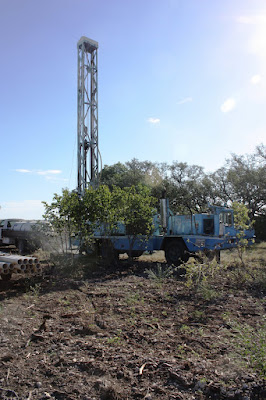
Recently I was invited to spend some time helping a friend work his bee hives. The experience made an impression on me. It is something I have really become interested in pursuing since I found out about the large losses in the bee population in Texas and the rest of the country. It is distressing to me for us to know that some of the pesticides that are approved in this country are destroying our bees. European countries have already outlawed some of these and the bee populations are rebounding. Following France and Germany, last year the Italian Agriculture Ministry suspended the use of a class of pesticides, nicotine-based neonicotinoids, as a precautionary measure. The compelling results, restored bee populations, prompted the government to uphold the ban.
Research from America confirms that at very, very low concentrations neonicotinoid chemicals can make honeybees vulnerable to fatal disease. If these pesticides are causing large numbers of honeybees, bumblebees, solitary bees, hoverflies and moths to get sick and die from diseases they would otherwise have survived, then neonicotinoid chemicals could be the main cause of both colony collapse disorder and the loss of wild pollinator populations.
Looks like the evidence is there just that the chemical companies have too strong a lobby in the USA.
Anyhow I have decided to do my part and become a keeper of bees in hopes that I can help preserve some of them. I do not want to buy domestic bees but would prefer to trap a swarm or obtain feral bees from another beekeeper. I am hoping to get a start from a friend and add feral or wild bees to that group. I would like to keep the little wild bees as they are more adapt at fighting parasites and pests that we have in Texas. Since I am not in it for the dollars in honey I would like to preserve some of the wild bees and if we get a little sweetness along the way that will be a bonus. I ordered some equipment and bee hive parts to put together myself. I figured that if I can put all this stuff together myself I will understand a little better how it works and how the bees use the hive. The pictures are of the two small hives that I finished in a natural finish to blend into the habitat. I got a garden copper top for one hive on an ebay auction and hope it will dress the hive up for backyard use. I just did not want the white hives I remember seeing in most apiaries.
It will most likely be spring before I am able to get a start in bees unless I happen to luck into a wild swarm somewhere. The drought has been very hard on local bee populations and many hives will have a hard time making it through the winter. Most bees will not even start swarming until spring so that is when I hope to catch a wild swarm or obtain some local bees. If you see a swarm be sure and let me know so I can come give them a new home, Wild Ed


Remember to click on comments below to leave a comment or read comments from others





















